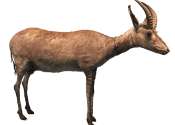Study investigates coronavirus dynamics in bats: Lower biodiversity means more pathogens
The loss of biodiversity poses a challenge for nature and humans alike. A study led by Ulm University shows that a decline in biodiversity promotes the spread of potentially zoonotic pathogens.









